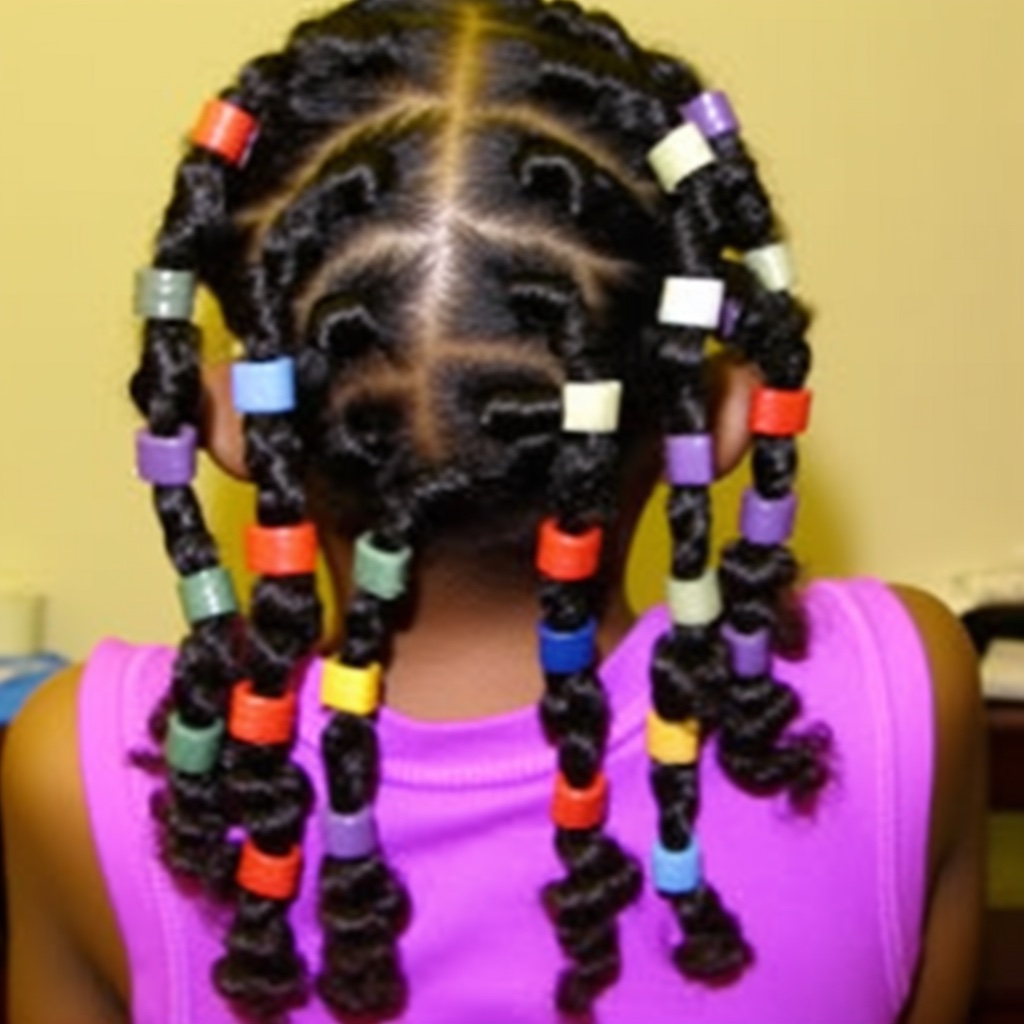Banding
FAQs:
What is banding?
Banding is a technique used to stretch and elongate natural hair without using heat. It involves sectioning the hair and wrapping elastic bands or hair ties along the length of each section. This method is commonly used by individuals with curly or coily hair to achieve a straightened appearance or reduce shrinkage.
Can anyone do banding on their hair?
Yes, banding is suitable for all hair types and textures, especially those with curly or coily hair looking to elongate their strands. It is a gentle alternative to heat styling and can be done on natural, relaxed, or transitioning hair.
How is banding done?
To do banding on your hair, follow these steps:
- Start with clean, damp hair. You can either wash your hair or mist it with water to dampen it.
- Divide your hair into sections using a rat tail comb. The number of sections depends on the thickness and length of your hair.
- Take an elastic band or hair tie and wrap it around the root of each section, leaving a few inches of hair below the band.
- Continue wrapping additional bands along the length of each section, leaving some space between each band. The number of bands used depends on how much stretch you want to achieve.
- Allow your hair to air dry or use a hooded dryer on a low or cool setting to speed up the drying process. Do not remove the bands until your hair is completely dry.
- Once your hair is dry, carefully remove the bands, and gently fluff your hair to separate the strands and reveal the elongated style.
Can I use banding as a protective style?
Banding can be used as a protective style, especially when done on natural or transitioning hair. It helps protect the hair from excessive manipulation and heat damage while promoting length retention.
How long does banding last?
The longevity of banding varies depending on your hair type, daily activities, and maintenance. On average, banding can last several days to a week. You can preserve the style by wearing a satin or silk scarf or using a satin pillowcase when sleeping to reduce friction and frizz.
History:
The history of banding is not as well-documented as some other hairstyling techniques. However, it is believed that various stretching methods, including banding, have been used for generations by individuals with curly or coily hair to achieve a straightened appearance without heat.
Products Needed:
- Elastic bands or hair ties
- Rat tail comb
Tutorial:
- Start with clean, damp hair.
- Divide your hair into sections using a rat tail comb.
- Take an elastic band or hair tie and wrap it around the root of each section, leaving a few inches of hair below the band.
- Continue wrapping additional bands along the length of each section, leaving some space between each band.
- Allow your hair to air dry or use a hooded dryer on a low or cool setting to speed up the drying process.
- Once your hair is dry, carefully remove the bands, and gently fluff your hair to reveal the elongated style.
Maintenance:
To maintain the banding style, avoid excessive manipulation or tugging on the hair. Moisturize your hair regularly to keep it hydrated and minimize breakage. You can also reband your hair every few days to refresh the stretched appearance and maintain the straightened look.

